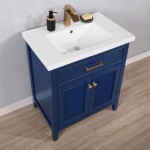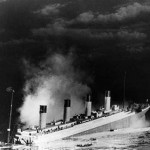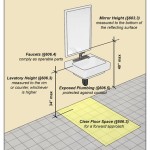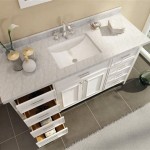Washer and Dryer Hookup to Sink
Connecting a washer and dryer to a sink involves tapping into the existing plumbing for both water supply and drainage. While this setup offers convenience, especially in smaller spaces, it requires careful planning and execution to ensure proper functionality and prevent leaks or water damage. This article provides a comprehensive guide to understanding the process and the critical considerations involved.
Water Supply Connections
Supplying water to the washing machine requires tapping into the hot and cold water lines under the sink. Typically, these are identified by red handles for hot water and blue handles for cold water. Shutoff valves should be installed on both lines before the connection points to the washer hoses. These valves allow for isolating the washer's water supply for maintenance or repairs without shutting off water to the entire sink. Specialized washing machine hoses, designed for higher water pressure, should be used to connect the appliance to the water supply lines. These hoses typically have different colored fittings, red for hot and blue for cold, corresponding to the faucet handles. It's crucial to ensure a tight fit to prevent leaks.
Adapters are often necessary to connect the washing machine hoses to the sink's plumbing. These adapters vary depending on the existing plumbing configuration and the type of hoses being used. Common adapter types include those that connect to compression fittings, threaded pipes, or push-to-connect fittings. Consulting a plumbing professional can help determine the appropriate adapters for a particular setup. It's also essential to use Teflon tape on all threaded connections to create a watertight seal and prevent leaks.
Drainage Hookup
Proper drainage is essential for a functioning washing machine. Connecting the washer drain hose to the sink's drain pipe requires a specific setup to prevent wastewater from backing up into the sink. A standpipe, extending approximately 30 to 48 inches above the floor, should be installed under the sink. This standpipe serves as an air break, preventing siphoning and ensuring that wastewater flows out of the washing machine efficiently. The washer drain hose is then connected to the standpipe, secured with a clamp to prevent slippage and leaks.
It's crucial to avoid directly connecting the drain hose to the sink's P-trap. This can lead to contaminated water siphoning back into the washing machine. Furthermore, the drain hose should not be submerged in standing water as this can also cause backflow. Proper venting of the drain system is crucial for preventing slow drainage and potential backups. This typically involves connecting the sink's drain system to a larger vent stack within the building's plumbing.
Electrical Connections
Washer and dryer installations require dedicated electrical circuits. These circuits should be properly grounded and sized according to the appliance manufacturer's specifications. Never use extension cords or overload existing circuits, as this poses a significant fire hazard. A dedicated 240-volt circuit is typically required for dryers, while washing machines usually operate on a 120-volt circuit. The electrical connections should be made by a qualified electrician to ensure safety and compliance with local electrical codes.
The location of the electrical outlets should be carefully planned to avoid contact with water sources. Outlets should be installed a safe distance from the sink and any water supply lines. Ground fault circuit interrupters (GFCIs) are recommended for outlets near water sources as an additional safety measure. These devices detect imbalances in the electrical current and quickly shut off power to prevent electrical shocks.
Vent Hookup for Dryers
Dryers require proper ventilation to exhaust hot air and moisture. Connecting the dryer vent to a suitable exhaust point is crucial for efficient operation and fire prevention. The vent should be made of rigid or semi-rigid metal ducting and should be as short and straight as possible to minimize lint buildup and airflow restriction. Flexible plastic or foil ducting should be avoided as these materials are flammable and can easily become clogged with lint, increasing the risk of fire.
The vent should terminate outdoors, away from windows, doors, and air intake vents. Proper termination prevents the exhausted air from being drawn back into the house, which can lead to moisture problems and reduced indoor air quality. Regularly cleaning the dryer vent is essential to prevent lint accumulation and maintain proper airflow. This includes cleaning the lint trap after each use and periodically cleaning the entire vent duct.

Washer Dryer Under Bathroom Sink

How To Install A Laundry Room Sink Lenox Plumbing

Laundry Rooms Sink Between Washer And Dryer Design Ideas

Washer Dryer In Bathroom

Washing Machine Mounted Under The Bathroom Sink Youtube

Like That Sink And Washer Dryer Are Same Height Laundry Room Design Layouts Remodel

Laundry Sink Cabinet Folding Counter Kreg Tool
2-840x500.jpg?strip=all)
What You Should Know About Installing A Washer Dryer In The Bathroom

Washer Dryer Next To Sink Design Ideas

Sink Above The Washing Machine Types Installation







